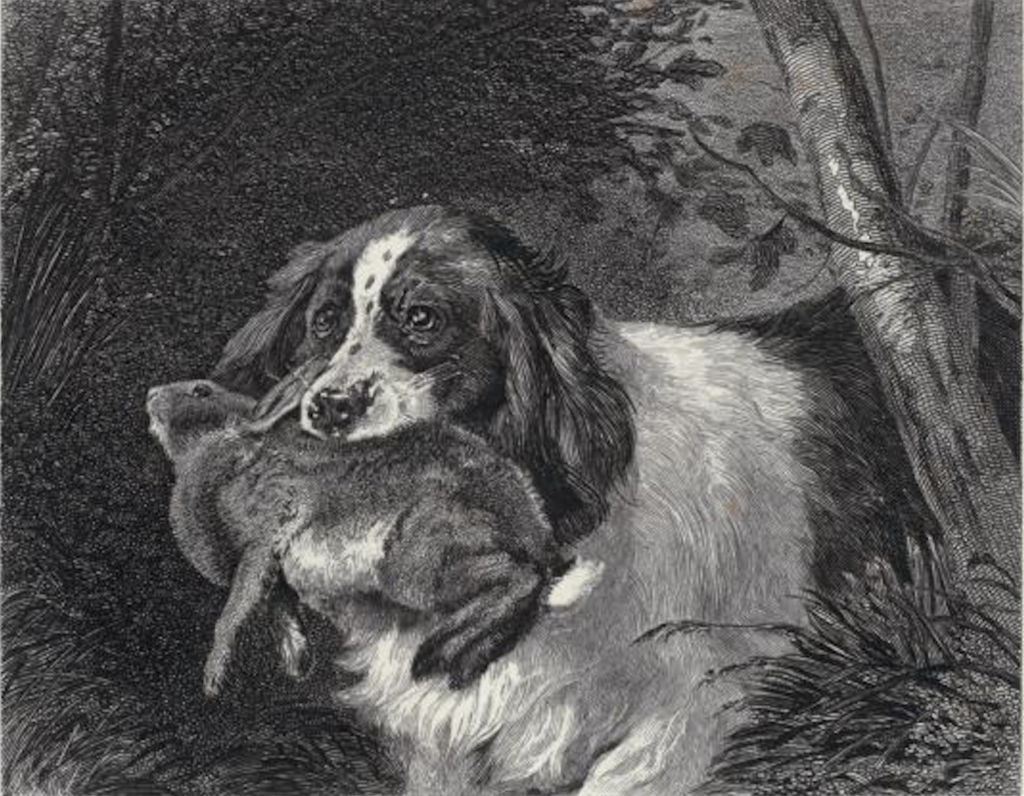The Dog and the Shadow
By Anonymous
Annotations by Karen Kilcup

A dog, with a piece of meat in his mouth, was crossing a stream on a plank, and saw in the water what he took to be another dog, with a piece of meat twice as large as his own. Letting go what he had, he jumped at the other dog to get the larger piece from him. He thus lost both,–the one he grasped at in the water, because it was a shadow; and his own, because the swift current swept it away.
Moral. Greediness is a bad fault, especially in children. Always avoid it, dear little friends. Be satisfied with the little you have, and never envy or covet the greater possessions of others.
Anonymous. “The Dog and the Shadow.” In “Our Little ONes’ Corner.” The Youth’s Companion 12, no. 1 (May 1882): 304.
Contexts
Begun in 1881, The Youth’s Companion—a name that many nineteenth-century publications shared—was a monthly student magazine that published articles written by pupils of the Catholic-run boarding school located on the Tulalip Indian Reservation. A federally recognized tribe located in the mid-Puget Sound area, the Tulalip Tribes received reservation lands—22,000 acres—in 1855, with its legal boundaries established by President Ulysses S. Grant in 1873. According to the Tulalip Tribes website, “it was created to provide a permanent home for the Snohomish, Snoqualmie, Skagit, Suiattle, Samish, and Stillaguamish Tribes and allied bands living in the region.”
Nineteenth-century Indian boarding schools aimed to assimilate Native Americans into white culture. They separated children from their families, required students to dress like white Americans, and prohibited them from speaking their language. They also emphasized so-called “industrial” training: boys learned agricultural and industrial skills, while girls learned how to cook, sew, and clean a household. Students were often expected to become servants or to provide manual labor help for whites.
Like many contributions to Native American student periodicals, this sketch was published anonymously. Students living on reservations during this time often received educations governed by white religious authorities who emphasized moral training. Student newspapers frequently published work by students, but it’s often difficult to identify authorship even if contributions included the author’s name. The moral that ends the sketch may be an addition by one of the school’s teachers. If an older student wrote the sketch and added the moral, the advice to avoid coveting others’ possessions carries heavy irony, given that settlers appropriated Native lands and belongings from the beginning of the settlement era.
Resources for Further Study
- Kalliber, Kim, “Seattle Continues Healing ‘Deep Wounds’ With Boarding School Resolution,” Tulalip News, October 20, 2015.
- King, Marsha. “Tribes confront painful legacy of Indian boarding schools,” Seattle Times,February 3, 2008.
- Marr, Carolyn J. “Assimilation Through Education: Indian Boarding Schools in the Pacific Northwest,” University of Washington Libraries Digital Collection. This article includes historical contexts and features “A Typical Daily Schedule.”
- ———. “Between Two Worlds: Experiences at the Tulalip Indian Boarding School, 1905-1932,” Hibulb Cultural Center & Natural History Preserve.
Contemporary Connections
“Tulalip History Minute 04—The Tulalip Indian School presented by Mary Jane Topash,” the Tulalip History Project. Provides Tulalip-sponsored background on the tribe.
“Editorial: Getting to the truth of Tulalip boarding school,” September 26, 2021, HeraldNet (Everett, Washington). Caution: includes information about abuses at the school.